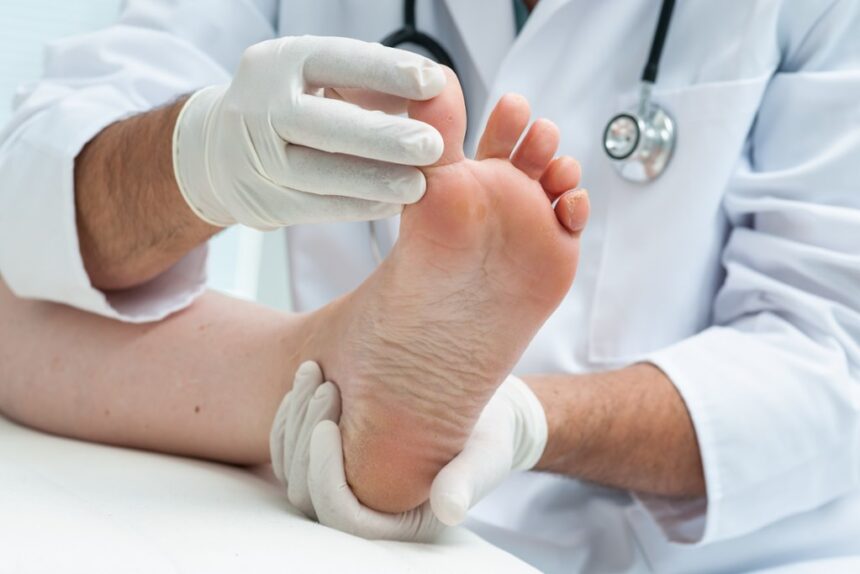Diabetes may impact blood flow, sensation, and healing, which increases the risk of complications. For people with diabetes, diabetic foot care is key to overall health. Here are some simple tips to protect your feet and why paying daily attention can make a difference:
What Are the Risks?
Diabetes affects more than just blood sugar levels; it also impacts blood vessels and nerves, especially in your feet. Poor circulation can restrict blood flow, making it harder for your wounds to heal. At the same time, nerve damage may dull your sensations, causing you to not notice minor injuries that could worsen over time.
If left unchecked, small cuts, blisters, or wounds can turn into infections, which can sometimes lead to serious complications. The key issue is that these signs may go unnoticed until they become more serious. Diabetic foot care and checkups can help catch potential problems early and prevent long-term damage.
How Does Daily Care Help?
Daily foot care routines are simple but effective for people with diabetes. They help keep your skin healthy, reduce the risk of infections, and allow you to spot issues early before they get worse. To take good care of your feet, follow these tips:
- Wash your feet every day with warm water and gentle soap.
- Dry your feet thoroughly, especially between your toes, to prevent infections.
- Moisturize your feet daily, but avoid putting lotion between your toes to prevent excess moisture that can cause fungal growth.
- Check your feet regularly for cuts, redness, swelling, or blisters. Use a mirror if needed to see the bottoms of your feet.
Making these small daily habits can help prevent bigger problems later on.
Why Do Shoes Matter?
Wearing the right shoes is very helpful for your foot health, especially if you have diabetes. Shoes that don’t fit well can put extra pressure on your feet and cause blisters or sores. Choosing shoes made of soft materials, with enough padding, and a proper fit helps reduce stress.
Before putting on your shoes, take a moment to check them. Small objects like pebbles or rough seams inside the shoe can cause pain during the day. Using seamless socks and avoiding tight straps around your ankles can also improve circulation. Always protect your feet to prevent problems.
What Should You Look For?
Keeping an eye on symptoms is key to preventing complications. Watch out for warning signs that require prompt action, such as:
- Persistent redness, swelling, or warmth, which may indicate an infection.
- Changes in skin color or texture, possibly pointing to circulation problems.
- Loss of sensation in your toes or feet, which could mean nerve damage is happening.
If you notice anything unusual, contact a doctor. Acting early may lead to better health outcomes.
How Do Regular Check-Ups Help?
Professional medical attention remains a better way to maintain foot health. Regular appointments with a foot doctor allow for thorough checks, making sure potential issues are addressed before they escalate. They might recommend specialized footwear, suggest physical therapy to boost circulation, or remove calluses safely.
Get Diabetic Foot Care
Long-term foot care is about more than just comfort or appearance. It protects your overall health, helping you stay active and independent. Since walking is essential for movement and exercise, healthy feet are key to maintaining mobility. By making simple daily adjustments, wearing the right shoes, and seeking professional care when needed, you can reduce physical strain and support a healthier lifestyle. Whether you’re starting a new routine or strengthening existing habits, remember that small changes can lead to big benefits.





